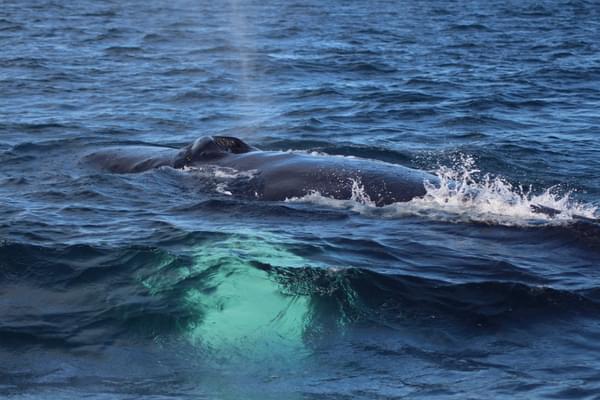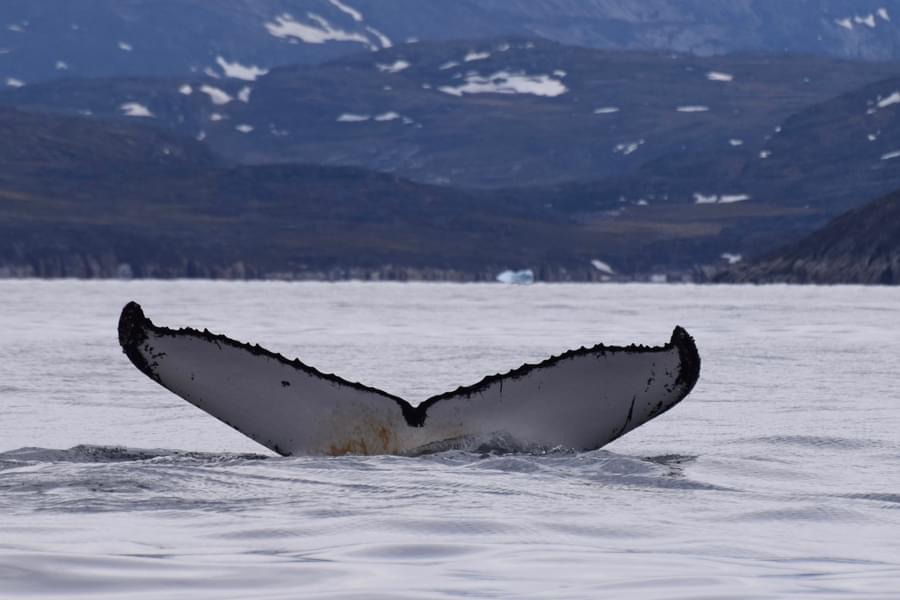On Friday 17 October, a Hullo passenger ferry reportedly collided with a humpback whale in English Bay, Vancouver. Canada’s Department of Fisheries and Oceans (DFO) said the operator is cooperating and confirmed the whale was seen swimming north after the incident. Hullo’s parent company, Vancouver Island Ferry Company, stated the vessel Spuhels “likely made contact with a whale,” adding the bridge team undertook evasive manoeuvres and a crash-stop and notified DFO, the Canadian Coast Guard, First Nations partners, and the Whale Reporting Alert System, in line with protocol. The firm also noted CCTV and crew observations showed the animal moving away post-event. Hullo operates two catamarans on up to 14 daily sailings between downtown Vancouver and Nanaimo.
On 20 October, naturalist Sara Jenkins of Wild Whales Vancouver photographed humpback BCX1193 “Zig Zag” with her 2025 calf “Skipper” near Vancouver; the calf bore a deep gash by the dorsal fin consistent with a vessel strike. The injury was not present in photos taken 16 October, making a link to the ferry incident plausible given the timing and location. Local operators urged extra distance and vigilance to allow the pair to rest and recover.
Why vessel strike risk is increasing and where high-speed ferries fit in
Whale numbers in parts of the Northeast Pacific are recovering, bringing more animals into busy sea lanes. Vessel speed is a decisive factor in collision risk and severity: slowing down both reduces the chance of a strike and cuts underwater noise. Multiple studies and agencies now point to 10 knots as a whale-safer threshold in key hotspots.
A newer issue is the rise of high-speed passenger ferries. Many use waterjet propulsion that can radiate less low-frequency noise than conventional propellers - the part of the spectrum that travels far and may cue whales at long range. Combine that with higher approach speeds (shorter “closing times”) and you can get a double problem: less advance warning and less time to react. In other words, a ferry that’s acoustically “quieter” at distance can still be more dangerous if it’s moving fast. This is why slow-downs and vigilant watchkeeping are so important for faster vessels.
Just last month, a humpback known as “Midnight” was found dead after a reported collision with a BC Ferries vessel on the province’s north coast - another reminder that strikes can be fatal and that consistent mitigation across ferry, cargo and recreational fleets is essential.
ORCA’s work on vessel strike mitigation
At ORCA, we partner with ferry, cruise and cargo operators to reduce collision risk. Our Introduction to Vessel Strike Mitigation training helps bridge teams recognise risk behaviours, identify species, and apply practical avoidance measures - especially speed management and safe course alterations in hotspots. We’re delivering this training with maritime partners so crews can embed best practice into everyday operations.
Beyond the bridge, ORCA OceanWatchers equips seafarers, passengers and coastal communities to log effort based sightings via an app. These citizen science data feed into maps and alerts that help target slow-downs and routing when whales are nearby - turning observations into timely decisions on the bridge.
For operators, adopting seasonal slow-downs, routing tweaks and crew training can dramatically cut risk - without stopping ships.

Vessel strikes are one of the biggest threats to large whales globally and needs urgent action before vulnerable populations are wiped out. Donate today at www.orca.org.uk/donate to support our cutting-edge vessel strike research and help find a solution to this threat

